The Arbiter
Restructuring An Unconventional Manoeuvre Unit
Although STTEP was initially contracted to train a hostage-release team to rescue the Chibok girls, the mission was changed as Boko Haram’s offensive continued to gain momentum. The new mission called for the establishment of a unit that would be able to take the fight to Boko Haram—and win. This unit would become known as Boko Haram’s Resurgence And Jonathan’s Magic Wand (2), by Hassan Gimba and would become the spearhead for the 7 Infantry Division based at Maiduguri. It’s meant to halt Boko Haram’s rapid advance and create breathing space to enable the government to hold elections.
After a brief selection phase, the selected Nigerian troops were hurriedly and rigorously retrained in numerous military arts such as musketry, field-craft, combat medical aid, communications, mounted and dismounted manoeuvre, and pursuit along with the application of direct and indirect fire. Due to a dire situation facing the country and the looming presidential elections, STTEP was only given a two-month period in which to train and prepare the unit and with the minimum of equipment.
Despite lacking both time and equipment, the training was completed and the under-equipped unit hastily deployed to Maiduguri. It was also decided to deploy STTEP personnel alongside the newly-trained Nigerian troops to boost their confidence and morale as well as to monitor the application and effectiveness of their training. Senior STTEP personnel would act as the leader group for the force as well as interface with the headquarters of 7 Infantry Division to ensure that the strike force operated in support of the operational intent of the General Officer Commanding, 7 Infantry Division.
The new doctrine allowed the strike force some operational flexibility and initiative. It was also decided that the strike force would not take and hold ground but rather make use of follow-on forces from 7 Infantry Division to reoccupy terrain recaptured from Boko Haram. This decision would free-up the MSF to continue striking Boko Haram targets.
THE MSF TAKES THE FIGHT TO BOKO HARAM
Whilst the force was preparing to enter into combat with Boko Haram, its two Gazelle helicopter gunships conducted numerous daylight and nocturnal patrols, attacking and destroying numerous Boko Haram assembly areas, concentrations, and technicals. These air attacks degraded both Boko Haram’s force levels and morale.
In January 2015, Boko Haram conducted numerous acts of terror against the local populace in the Mafa area; the survivors fled to Maiduguri in large numbers. The force deployed on its first combat mission in late-February 2015 and its target was the town of Mafa, approximately 57 kilometres west of Maiduguri. The MSF retook Mafa and exploited to a distance of approximately five kilometres west of the town. The follow-on units of 7 Infantry Division occupied the town shortly thereafter and the 72 MSF returned to Maiduguri where thousands of citizens lined the streets to cheer the force on its success and return.
While plans were being made to recapture Bama and Gwoza, two large Boko Haram strongholds, the MSF’s helicopter gunships continued flying ‘locate and strike’ missions and a small helicopter-borne force conducted numerous stand-off mortar bombardments on known Boko Haram positions. During a night advance and link-up operation for the strike on Bama, a Nigerian Army T – 72 tank shot out an MSF MRAP, resulting in two MSF combat casualties. This so-called ‘friendly fire’ incident resulted in the attack on Bama being postponed. Forty-eight hours later, the MSF conducted its strike on Bama, recapturing it from Boko Haram. The follow-on forces of 7 Infantry Division rapidly occupied and cleared Bama and held it against any possible Boko Haram counter actions.
One of the last MSF intelligence cells reports to the Department of State Services (DSS), Nigeria’s domestic intelligence service—also known as the State Security Service—outlined the probable future actions of Boko Haram. This report predicted that the weakened Boko Haram would shortly revert to ‘suicide bomb’ attacks to compensate for their degraded military capability. It also recommended that future intelligence operations should include the infiltration and identification of the predicted suicide operation centres and bomb-making facilities.
STTEP’s personnel left Nigeria shortly thereafter as the end of the Goodluck Jonathan era coincided with the end of the STTEP contract. The incoming government of President Muhammadu Buhari was under pressure not to re-engage STTEP. Instead, the United States expressed its interest in returning to Nigeria and resuming the training of the Nigerian forces.
Conclusion
From Berlow’s narrative, we can see that despite only a three-month contract and amid numerous media attacks on STTEP and its engagement in Nigeria, during one month’s operations, the 72 MSF recaptured a landmass larger than Belgium from Boko Haram.
Unfortunately as is the case with almost all political struggles, especially those fought between the forces of conservatism and those of revolt, whichsoever succeed tend to throw away the bath water with the baby.
Here (Nigeria), there is no clear-cut demarcation between conservatives (generally the haves or those who want the system to continue) and progressives (generally the have-nots who want a change) except if we want to live in denial and bury our heads in the sand like the proverbial ostrich. It is all perceptions and expectations but unfortunately, we clap when everything past is thrown into the dustbin for political reasons not knowing that those inadvisable actions may come to haunt us as a nation.
The Nigerian military is battling and is desirous of bringing back its glory and restoring its pride. However, like any practitioner of any profession, it cannot do so without training and retraining. While it has the basic skills and may come out fair in conventional warfare, it needs to be abreast of relevant strategies and tactics in the face of current challenges.
The Nigerian military has been crying of lack of funds to buy modern weaponry to replace some archaic ones in terms of current realities and up its training, yet it is all controversies over $1billion budget meant for that.
However, we should never shy away from the truth that Boko Haram insurgents, with no formal military training, must have seized some Nigerian soldiers who at the cost of their lives would be forced to train them the way Nigerian soldiers are trained.
We must think along that line if we want to be realistic. And if that is so, what strategy would our fighting forces have that would surprise and annihilate the insurgents? In any case, how strong is the will? Some of our soldiers at the battlefront are now carried away by the need to make money. From Askira Uba, down to Maiduguri and up to Baga in Borno State, our fighters are into big-time farming, ranging from crop to livestock (animal rearing, fisheries and poultry) production.
But the insurgents must be made to face a force whose thinking is totally different from what they have come to know. And it should be a blitzkrieg sort of operation – something that would deal a swift and final blow that before they even know what hit them, it will be over. The era of waiting to be attacked to repel should be over. Even Jose Mourinho, master of defensive attack, is changing his tactics to reflect the modern reality of the offensive play. We can’t afford to lie back and just be a reactionary force.
Whatever it is we want to believe, the Jonathan administration which woke up, perhaps late, was able to decimate Boko Haram, which was stronger than now, in less than two months.
It will be in our national interest to study why and borrow from the administration’s method. But while at it, the recruitment base and motive of the insurgents must be cut off for us to have a lasting solution.
It is pertinent to note that if the government wants to readopt the Jonathan strategy, those coming should additionally be contracted to man our borders on that side alongside our border patrols, perhaps living in fear of the insurgents’ reprisal attacks if they “spoil” their show. The insurgents easily get their food, fuel and other essential supplies through those borders.
However, if those who can make things happen feel they would be laughed at if they acknowledge the efficacy of the Jonathan panacea and adopt it, they may try the Peoples Militia method used by Syria and Iraq to take back their countries from the stranglehold of ISIS, the alter ego of Boko Haram. Their hold over the two countries was stronger than of Boko Haram here.
They can be recruited, with the cooperation of security agencies and traditional rulers, from hunters, vigilantes and volunteers like Hon. Gudaje Kazaure of the House of Representatives who have shown a willingness to take the fight to Boko Haram.
It would interest people to know that Boko Haram ran away from Azare in Bauchi State, Dukku in Gombe State and Biu in Borno State not because of our security forces but because the people of the towns faced them even without arms but brave hearts.
Again, for that to succeed, the people must be made to know that whatever happens to them (as in death) the government would not forsake their dependants. Those in government must accept that what’s good for them is also good for the people. For instance, the people of Potiskum, in Yobe State, still “marvel” at how six years after Aliyu Garba, the town’s Divisional Police Officer, was killed by Boko Haram while fighting them to save the town, his widow has been given only N400,000. How she caters for herself and their four kids is apparently nobody’s business. Or so it seems.
Concluded
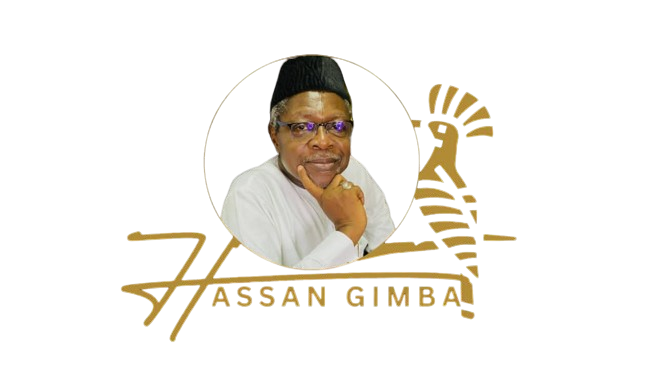
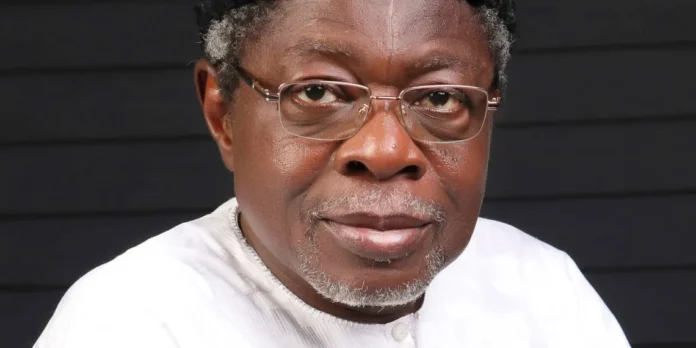
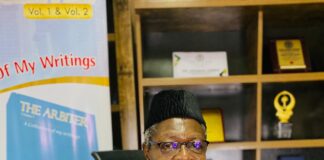
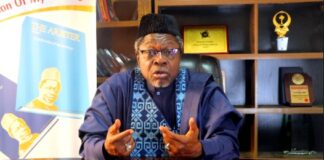
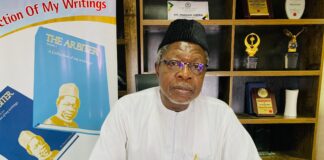

[…] READ ALSO: Boko Haram’s Resurgence And Jonathan’s Magic Wand (2), by Hassan Gimba […]